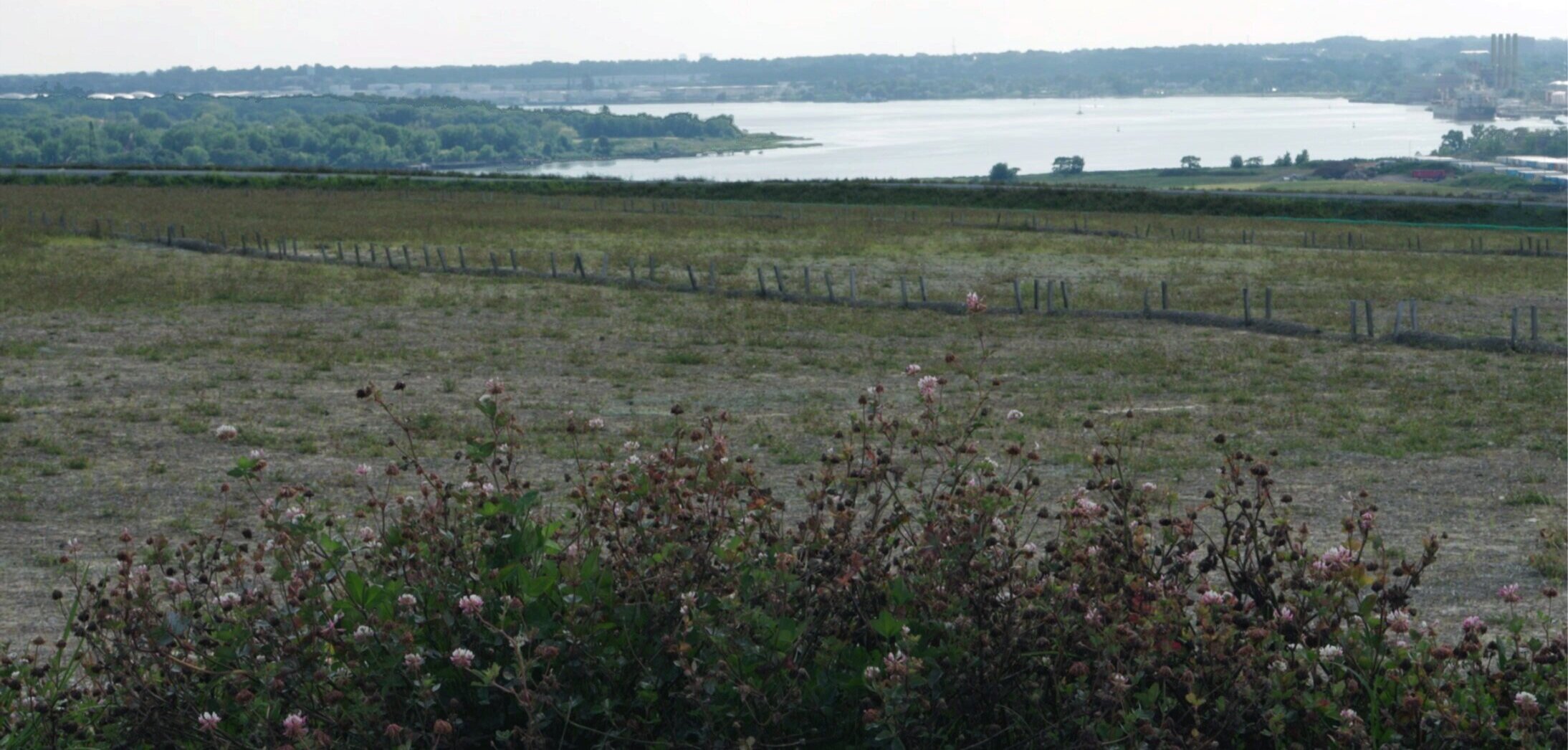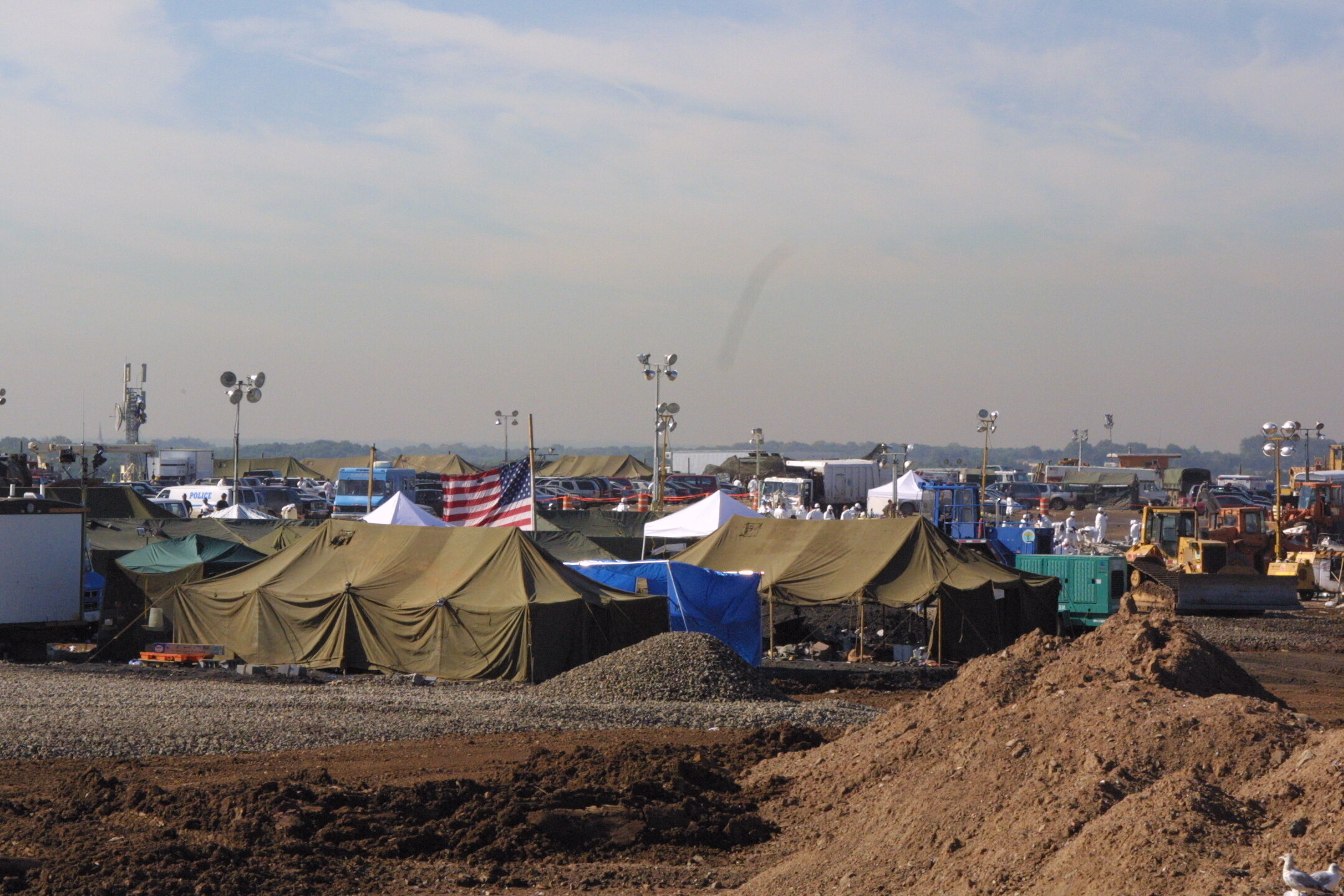Fresh Kills: Recovery
On March 22, 2001, Fresh Kills Landfill received its last barge of residential solid waste. Nearly six months later, on the fifth of September, the City of New York—in partnership with the Municipal Art Society, New York State Department of State, New York City Department of Sanitation, New York City Department of Parks & Recreation, and New York City Department of Cultural Affairs—announced the International Design Competition for Freshkills Park to source ideas for the planning and design phases of the long term landfill-to-park project for the 2,200-acre site.
Since 45% of the 2,200-acre site is composed of four landfill mounds, the landscape of Freshkills has been engineered with layers of soil and undergone various infrastructural changes to transform the site into the lush, biodiverse landscape it is today. But the journey from landfill-to-park took a dramatic turn on September 11, 2001.
Thanks to the careful and tireless work of the New York City Department of Sanitation before, during, and after 9/11 recovery, the final resting place of the remains of the World Trade Center site are at home with thriving flora and flourishing fauna.
Read on to learn more about DSNY’s role in recovery.

“We were responsible for making sure every ounce of forensic material that came from Ground Zero made it up to the site — Every night we put our heads on a pillow and we knew that we had done everything humanly possible to make sure that our mission was being accomplished.”
-Dennis Diggins
caring for and sorting the forensic material.
Water access, proximity to the WTC site, and available space made Freshkills the ideal location for 9/11 recovery work. About 1.4 million tons of material was brought to Freshkills and sorted by forensics, in some cases so finely that the material passed through a ¼ inch sieve. After screening and sifting, the remaining WTC material was placed in a 48 acre area in Section 1/9 at Freshkills, a 225ft mound at the western boundary of the park.
To prevent any type of disturbance of the material, a one foot layer of non-toxic, contaminant-free soil was placed on the land below the materials prior to placement of the screened materials. After the sorting process was complete, the area was covered with additional healthy soil to control erosion and protect the site. DSNY’s exhaustive recovery efforts ensured materials were handled with care.
Material from the WTC site was transferred to Section 1/9 until July 15, 2002 and the final items were sorted and screened on July 26th. Throughout the entire process, DSNY’s core mission was to move all the material to the site and sort through it with the utmost care and respect. Amazingly, this 24/7, 10-month recovery effort took place without disrupting normal DSNY operations in the city.
At Fresh Kills, DSNY was responsible for unloading the material from the barges, separating it and stockpiling it, while the FBI and NYPD led the screening and forensics activities.
DSNY’s Marine Fleet
DSNY loaded approximately 500 barges - each containing 600 tons of material - and delivered them to Fresh Kills.
Weeks Marine loaded over 1,500 DSNY barges at Pier 25, which DSNY delivered to Fresh Kills.
“People would work thirty, sixty days straight. Twelve hours a day or more.”
— Martin Bellew
Capacity
The operation increased quickly, from processing 1,750 tons of material per day in mid-September to 17,500 tons per day in mid-October. Phillips & Jordan, a company contracted by the Army Corps of Engineers, coordinated between the different agencies and procured the sorting equipment to streamline the screening process.
“Once we —the FBI and everybody involved—established a procedure on the hill, it became a very smooth operation. We did this. We did this for so many years here, that we just fell right into it, as if we'd never stopped. It was a 24/7, 7-day-a-week operation.”
-Michael Mucci
health + safety
DSNY worked with the New York State Department of Environmental Conservation (DEC) to conduct thorough and constant environmental reviews, analyses, and tests to ensure the safety and health of recovery workers and residents of Staten Island who lived in communities close to Freshkills. From dust and leachate monitoring to soil and water testing, DSNY recovery work at Freshkills expanded far beyond moving and sorting materials.

the final resting place
Alsike clover foregrounds the expansive soils and grasses on section 1/9 that overlook Arthur Kill, the 10-mile long channel connecting Raritan Bay with Newark Bay.
After the exhaustive 10-month recovery effort was complete, the remaining fine debris from the WTC was placed in a 48-acre area on top of the hill, with clean layers of soil underneath it and above it. DSNY engineers worked with DEC to modify their methane capture system so that future landfill infrastructure skirted around the perimeter, so that this resting place would never be disturbed.







